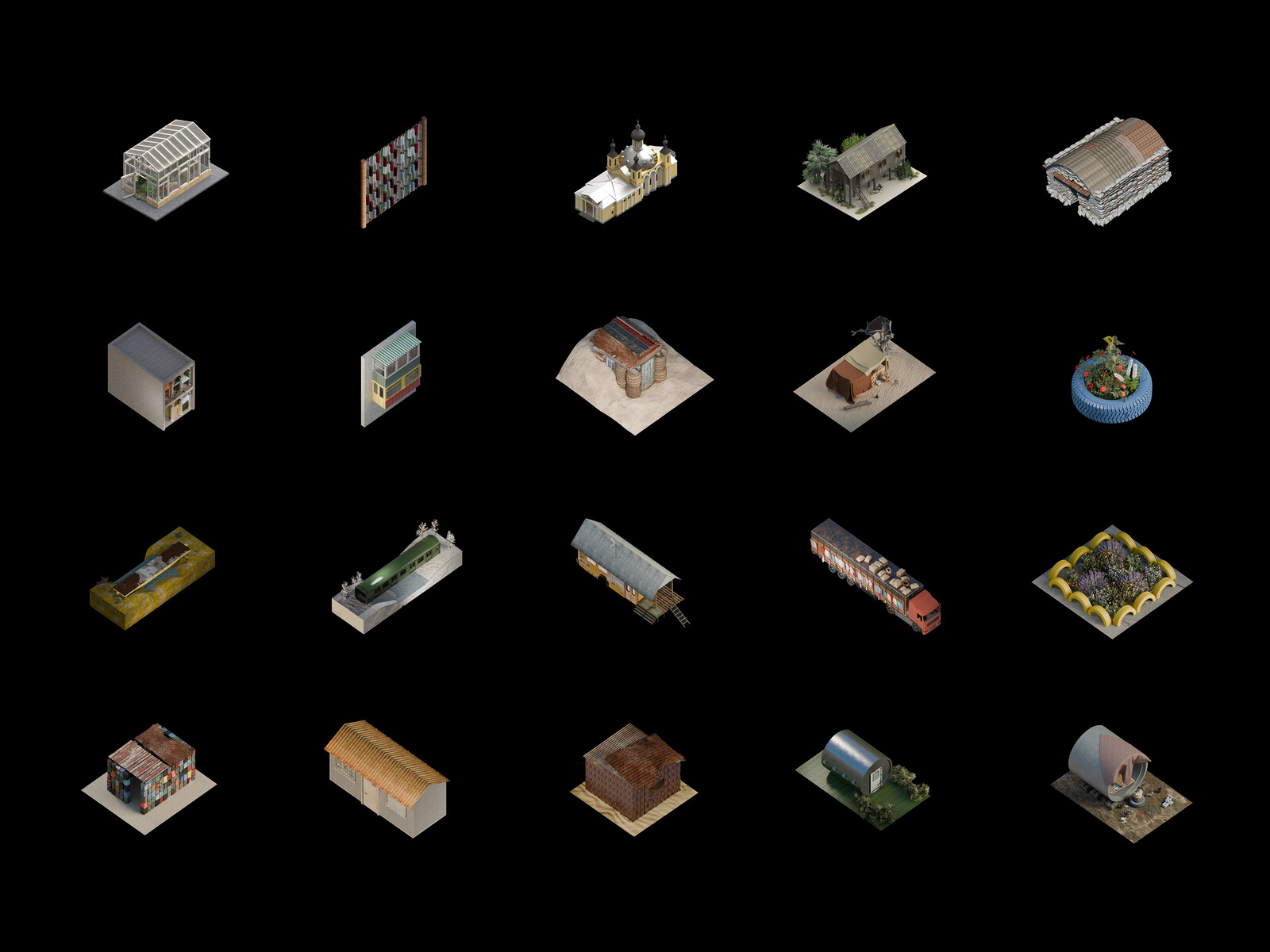FORCED REUSE: Rethinking Conventions Through Crisis
Research exhibition in Geneva and Milan
Immeuble Clarté
Rue Saint-Laurent 2/4
1207 Geneva
Switzerland
Forced Reuse is a research project investigating the phenomenon of adaptive reuse of objects and spaces driven by acute community needs and conducted by users independently from architects and designers. The project is not limited by geography, economy or scale, but by a drive to uncover the driving force behind non-professional reuse of building elements and spaces. In particular, it is interested in the reasons that push communities to rethink conventional building practices in regions where necessity overrides formal systems; where people are forced to reuse.
At the core of this research lies a critique of the extreme conventionalism that dominates current adaptive reuse practices today and the profession at large. It argues that the eld is governed by standardized codes, outdated legislation, and rigid frameworks that restrict possibilities. These limitations fail to capture the ingenuity and pragmatism of those who, often out of necessity, operate outside formal systems—often in politically unstable and economically disadvantaged regions, where communities must navigate a reality where ocial regulations and professional norms simply don’t apply or are nancially out of reach.
The research project dierentiates from other contemporary practices of adaptive reuse, driven by historical preservation, environmentalist, or sentimental reasons. It looks at the contexts, where reuse emerges from urgency—whether due to scarcity of materials, political turmoil, or climate crises. By focusing on the particulars and peculiarities of such inventive responses, the project seeks to uncover a form of intelligence born from necessity, crisis, and need.
A refugee shelter made from oil containers, a house built with used car tires, an old bus repurposed as a countryside barn, a bridge constructed from a train wagon, a war bunker transformed into a car repair shop, and a cooperative garage converted into an improvised gym—these are just a few examples of unique typologies, discovered in the “Forced Reuse” research. Structures built not from what is traditionally meant for building, built from scarcity and poverty, and at the same time always smartly reusing something that is in excess, what is conventionally considered “waste”. These structures are crafted with immanent smartness, wit, and beauty, making them inherently ecological.
The project will be exhibited in two exhibitions: one in Geneva, one in Milan; and will include various research cases represented with 3D models and drawings, 1:1 prototypes, and images taken by professional and non-professional photographers and users in the various case studies. The exhibitions will be followed up with a publication in mid-2025.
The first exhibition will open (with an apéro) at Foundation Clarté (Immeuble Clarté building by Le Corbusier) in Geneva on January 14, 2025, at 5pm
Foundation Clarté: Rue Saint-Laurent 2/4, 1207 Geneva, Switzerland
You are welcome to come!
The final exhibition will take place in Dropcity Milan during Milan Architecture Week (May 2025). The exact time is to be confirmed!
Dropcity: Via Giovanni Battista Sammartini, 60, 20125 Milan, Italy
Research core team: Leonid Slonimskiy, Gili Merin, Valentina De Luigi, Artem Kitaev. Research team: Kristina Kramarenko, Janna Aleksanyan, Kateryna Shushynska, Dmitrii Prikhodko, Elena Alekseitseva.
Research contributions by: Anadis González, Asif Salman, Blanca Garcia Gardelegui, Patcharada Inplang.
Financing: HES-SO RCDAV
Co-financing: HEAD – Genève (HES-SO)

